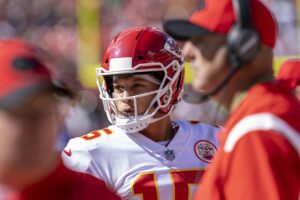Manziel, Bridgewater, Watkins, Clowney. These are the names that come to mind when thinking about this year’s NFL draft. These players have been in front of the ESPN cameras for almost the past two years due to their professional potential and even more so for their actions off the field. It is often the case, however, that the more unpopular or unknown faces are the ones that end up leading our favorite teams to victory every Sunday. Tom Brady, for example, was drafted in the sixth round of the 2000 NFL draft. Since then, Brady has become one of the most successful quarterbacks of all time. This year’s NFL draft is filled with talent at the quarterback position. Surprisingly, a relatively unknown junior quarterback from the University of Central Florida has slowly convinced draft scouts of his professional potential. With this said, his lack of media attention coupled with UCF’s relative namelessness has forced many to ask the question, “Who the hell is Blake Bortles?”
Believe it or not, Blake Bortles is widely regarded as the top quarterback in this year’s NFL draft. Prior to this season, he was a nobody. He was nowhere to be found on draft big boards and there was no mention of him from the experts. Bortles’ rise from scrub to star may seem puzzling, but it is far from uncommon. Take Ryan Tannehill, for example. Prior to the 2011 college football season, nobody considered Tannehill a first round talent. Fast-forward a couple months, a very successful senior season, and Matt Barkley’s decision to stay in school, and Tannehill was deemed the number three quarterback in his draft class. He would go on to be selected eighth overall by the Miami Dolphins and almost immediately find success as their starting quarterback. Blake Bortles shares a similar situation to that of Tannehill.
Going into the 2013 season, the nation’s top college quarterbacks were considered to be Teddy Bridgewater, Johnny Manziel, AJ McCarron, Marcus Mariota, Tajh Boyd, and Braxton Miller. What happened? Well, Manziel dazzled on the gridiron, but, unfortunately, made controversial decisions leading some to question his leadership. Bridgewater was considered to be too small and too timid. McCarron failed to break away from his “game manager” label and Boyd had a rather forgettable senior campaign. Both Mariota and Miller decided to return to their respective schools. While all of this was going on, Bortles’ was leading UCF to its most successful season in school history.
With Bortles under center, the knights finished the season with a 12-1 record and an impressive Fiesta Bowl victory over Big 12 powerhouse, Baylor University. Bortles finished the year with 3,581 passing yards, 25 touchdowns, and 9 interceptions. He had a 67.8 completion percentage and a 163.4 passer rating. When compared to the likes of Bridgewater and Manziel, Bortles had rather ordinary numbers.
| YDS | TD | INT | CMP% | RAT | |
| Blake Bortles
(UCF) |
3,581 | 25 | 9 | 67.8 | 163.4 |
| Johnny Manziel (Texas A&M) | 4,114 | 37 | 13 | 69.9 | 172.2 |
| Teddy Bridgewater (Louisville) | 3,970 | 31 | 4 | 71.0 | 171.1 |
Bortles had the least yards and touchdowns and the lowest completion percentage and passer rating of the three quarterbacks. Looking at statistics alone, it would appear that Bridgewater is the top quarterback. College statistics, however, mean very little when it comes time for an NFL franchise to draft their future signal caller. Remember JaMarcus Russell? Russell threw for over 3,000 yards, 28 touchdowns, and only 8 interceptions in his senior season at LSU. Russell would go on to become the first overall pick in the 2007 NFL draft and arguably the biggest “draft bust” of all time. Because of situations such as the failure of JaMarcus Russell, in the end, NFL franchises really examine how “NFL ready” a draft prospect is, and how well they fit the “NFL mold”.
Blake Bortles represents the generic or ideal NFL quarterback. HE is 6’4’’, 230 pounds and has an extremely strong throwing arm. He thrives in the pocket, has patience while delivering the football, and has very impressive downfield vision. Intangibles such as these are somewhat rare in today’s college quarterbacks who, while under pressure, often elect to carry the football for a short gain rather than stay poised and look downfield for an open receiver. With this said, Bortles is also very athletic for his size. Bortles ran a 4.9 second 40 at this year’s combine, which ranked in the top ten for quarterbacks. This speed allows Bortles to be extremely effective in play action and provides him with the mobility to navigate the pocket and escape if necessary. In fact, this past season Bortles rushed for 272 yards and 6 touchdowns. Bortles demonstrated this athleticism along with his previously mentioned poise at various times last season.
This past October in Louisville, Kentucky, Bortles and the Knights faced off against Teddy Bridgewater’s undefeated Cardinals. Having already thrown for around 200 yards and a touchdown, Bortles found his team down by four with three minutes remaining. The UCF quarterback went on to conduct a 70-yard drive that was capped off by a 2 yard, game-winning touchdown pass with 23 seconds remaining in regulation. Bortles’ ability to run the “2 minute offense” and stay calm in high-pressure situations shone through in his biggest game yet and, slowly, he began to creep into conversations about college’s top quarterbacks. Bortles continued to thrive for the remainder of the season, leading UCF, a mid-major college football program, to a BCS bowl victory.
When looking at Blake Bortles in comparison to today’s NFL quarterbacks, only one individual comes to mind. Bortles’ size, accuracy, and mobility mirror those of Pittsburg Steelers quarterback Ben Roethlisberger. Roethlisberger’s 10-year career has been defined by breaking tackles in the pocket, escaping pressure, and delivering pinpoint passes to open receivers downfield in high-pressure situations. Bortles demonstrated these same qualities last year at UCF. At 6’5’’, 241 pounds, Ben Roethlisberger ran a 4.75 second 40-yard dash at the 2004 NFL combine. Although a little bit faster, Roethlisberger’s time is very similar to Bortles’ 4.9 second 40. Both exhibit exceptional speed for their size, a combination that often challenges NFL defensive linemen as they pressure the quarterback.
The first quarterback taken in this year’s NFL draft likely will be either Blake Bortles or Johnny Manziel. Teddy Bridgewater is a bit undersized and his in-game performance faltered toward the end of last season. Bortles has a significant size advantage over Manziel and shows more comfort in the pocket. He is not as athletic as Manziel, but is still exceptionally able for his size, a trait that NFL scouts love. Because of this, Bortles will likely be the first quarterback drafted and will, without a doubt, be a top 3 pick. It is highly likely that the Houston Texans, a team without a starting quarterback, select Bortles with the first overall pick. If, however, the Texans decide to draft a defensive star such as Jadeveon Clowney or choose the ever-elusive Johnny Manziel, Bortles will likely go to the Jacksonville Jaguars, a team that has struggled to find a starting quarterback since David Garrard was under center, at pick number three.
Blake Bortles is the spitting image of an NFL caliber quarterback. Although he isn’t as popular a player as Johnny Manziel, Bortles exhibits qualities that will make him a respectable starting quarterback in the league. Bortles’ transformation from a mid round pick to the potential first overall is refreshing and, at the same time, very well deserved. Although, inevitably, many fans will be baffled when Roger Goodell tells them that their team has drafted “Blake Bortles from the University of Central Florida”, it won’t be long until they are cheering his name each and every Sunday.
Photo: Birwin01/Flickr




